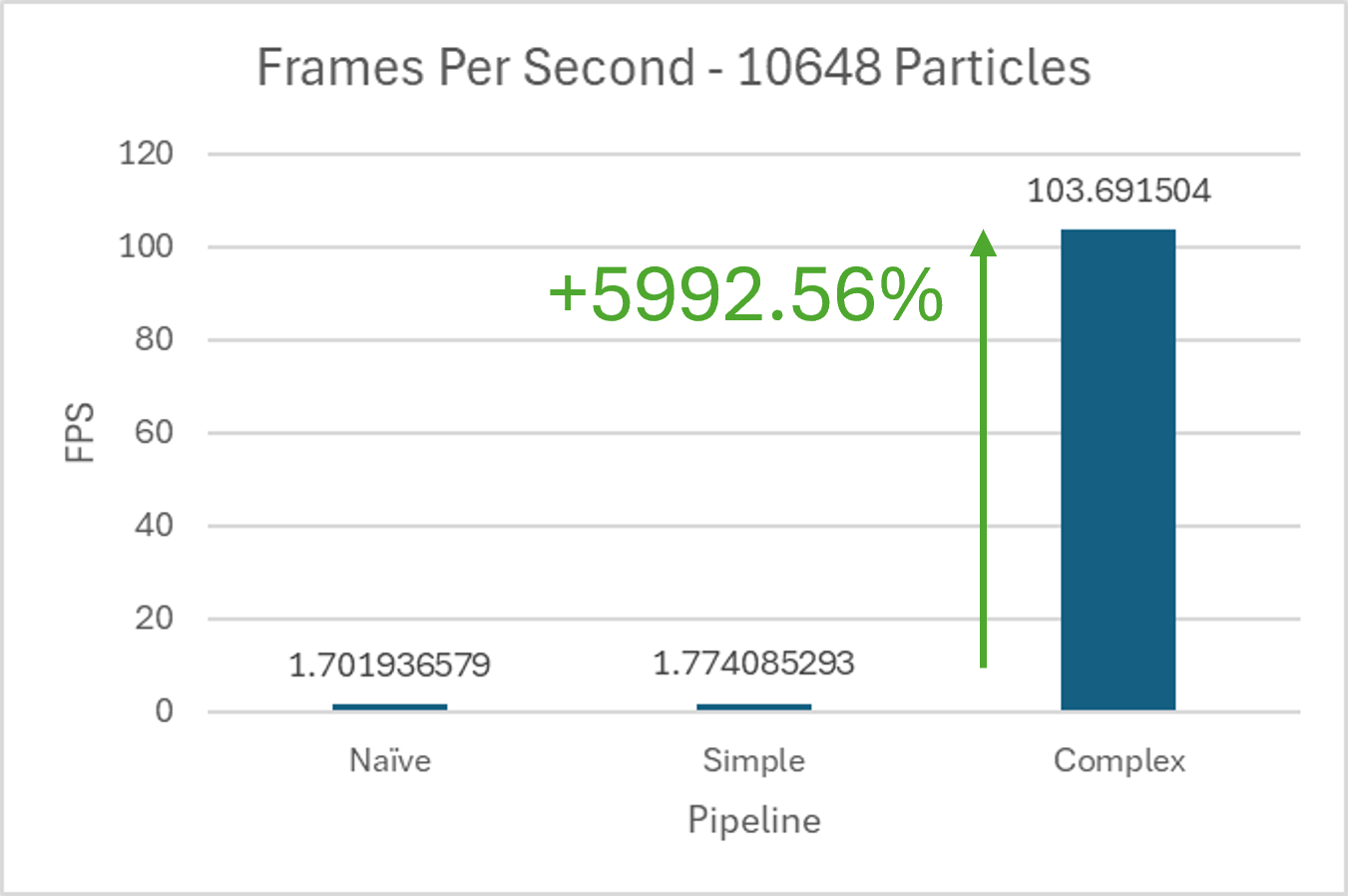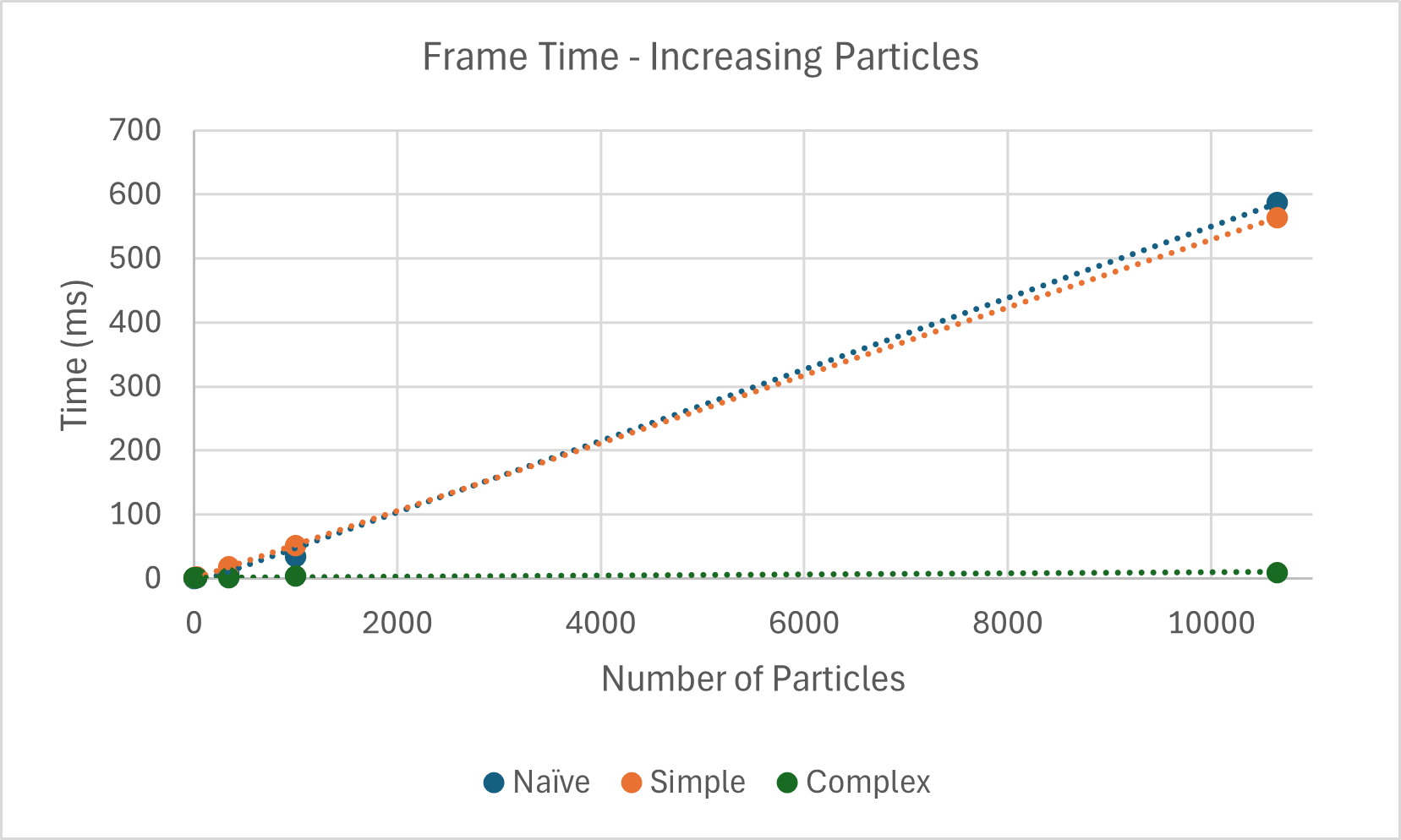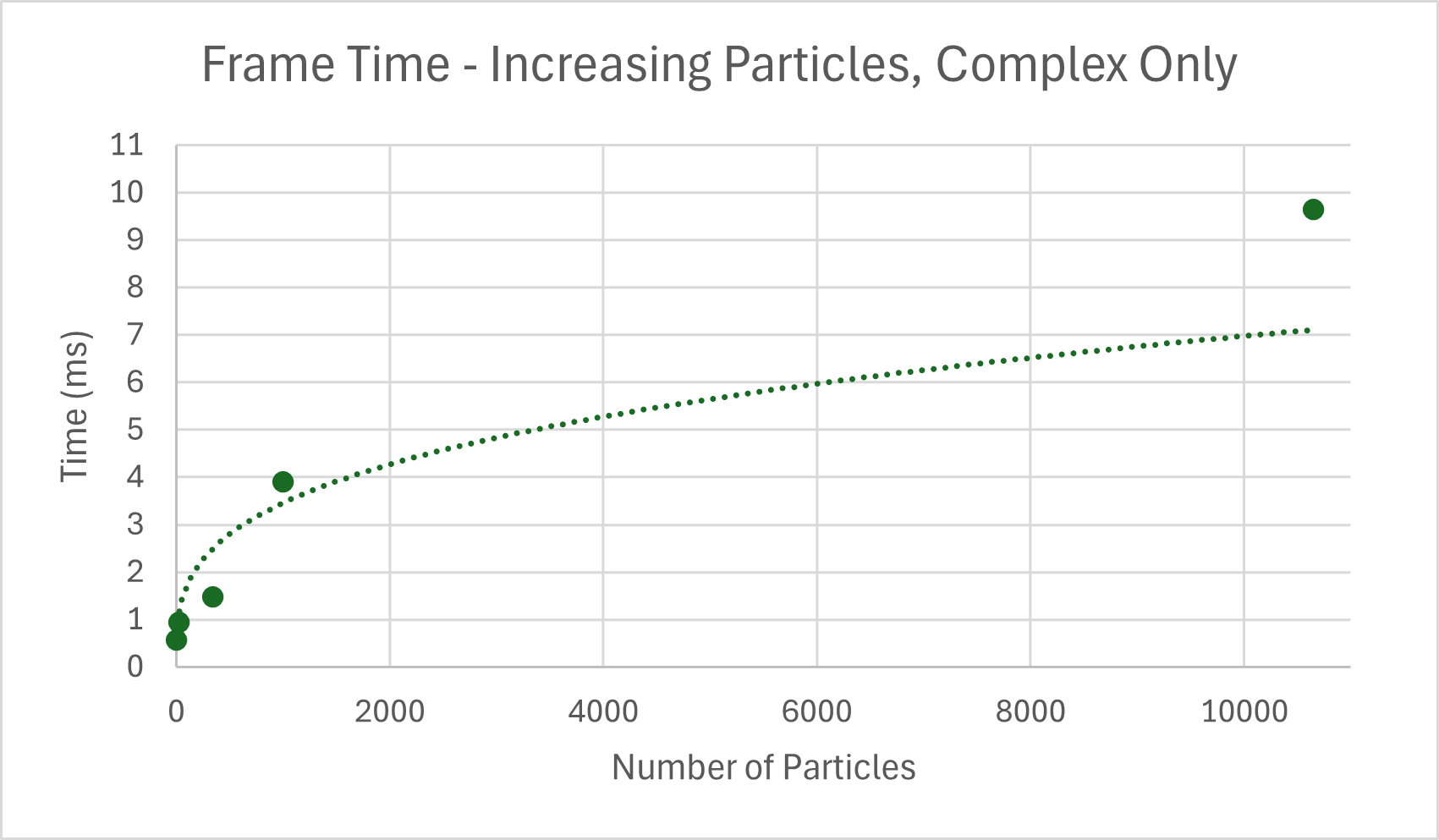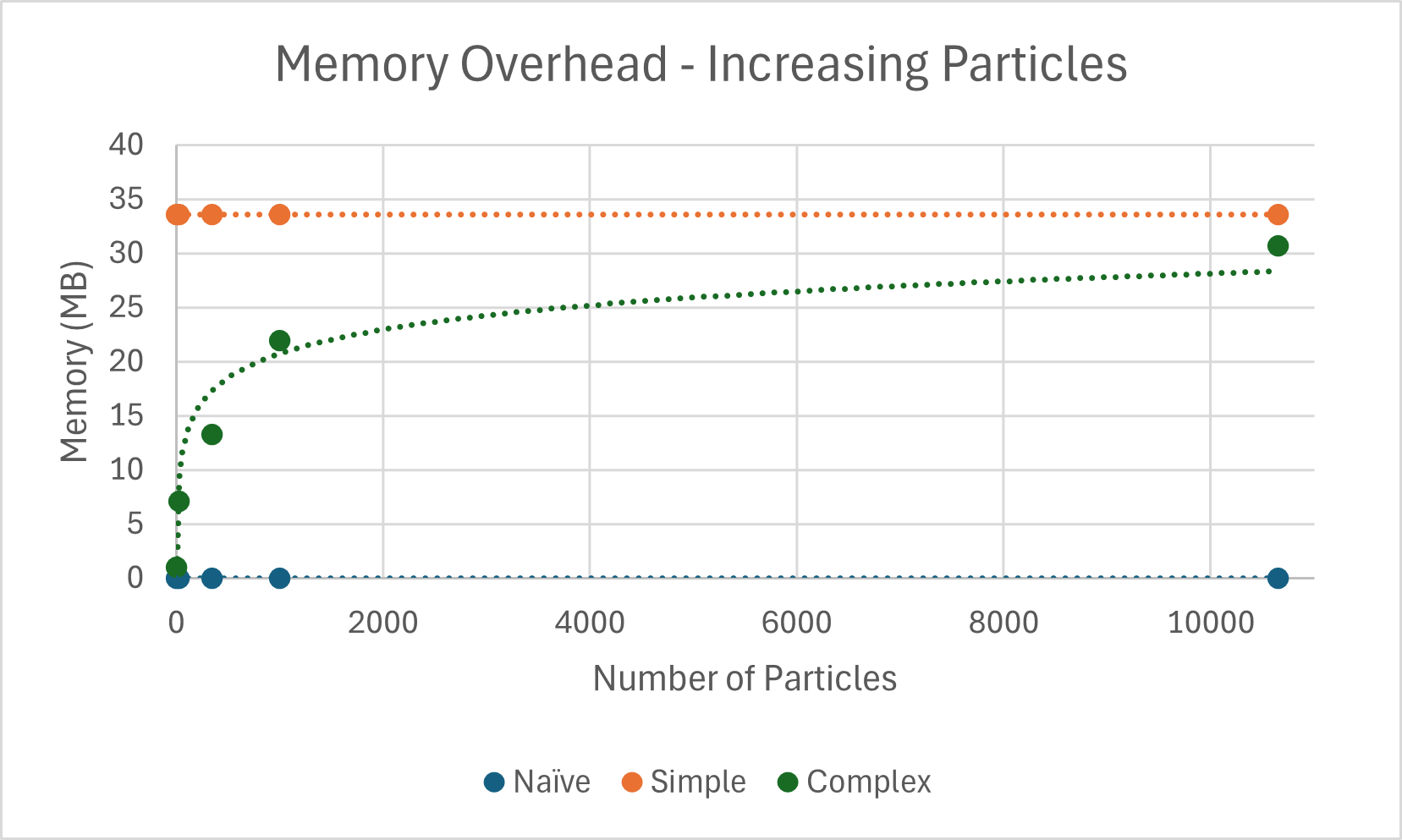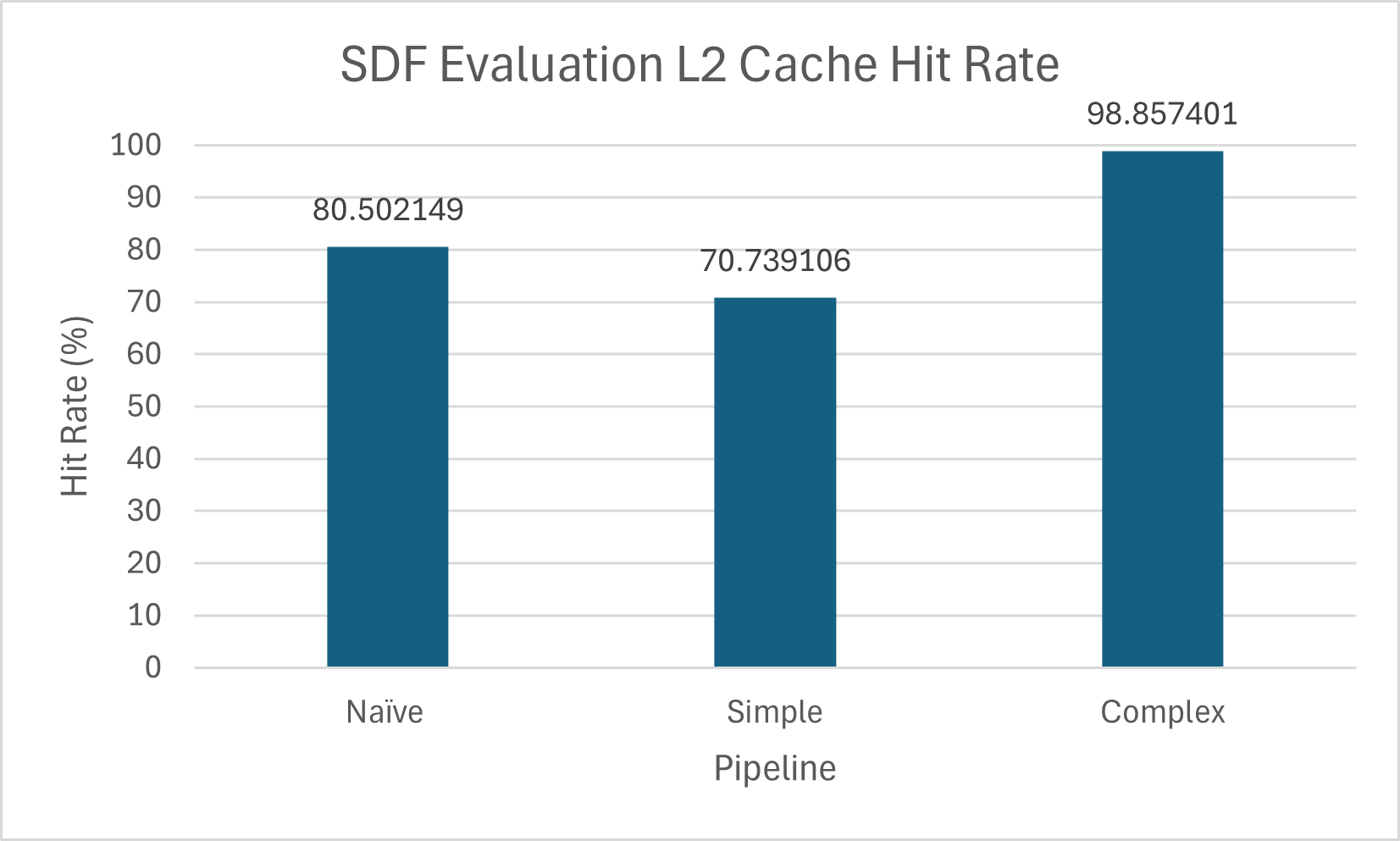Meshless 3D Fluids - Honours Project
Winner of

Award for Technical Innovation
Shortlisted for

Award for Game Technology
Particle-based fluid simulations allow for unparalleled realism fluids like water in video games. They work by breaking the fluid down into individual particles.
There is no inherent way of tracking surface geometry, however, thus various techniques for reconstructing and rendering the fluid surface have been investigated.
One way is to directly sphere trace the isosurface extracted from a signed distance field (SDF) representing the fluid body without the use of an intermediary
mesh, and various techniques have been proposed that can reduce the computational and memory costs involved.

This study aims to design and implement a pipeline for the non-polygonal rendering of particle-based fluid simulations,
incorporating several novel techniques, and to evaluate its effectiveness at reducing rendering
latency and memory consumption when compared to less advanced methods.
An application was developed in C++ with Direct3D 12 and DirectX Raytracing. A novel narrow band technique, an optimised nearest neighbour search (NNS) and the construction of a
sparse brick set (SBS) data structure were combined into a unified pipeline for achieving the abovementioned rendering technique.
Two additional pipelines were implemented utilising simpler and completely naïve methods, to compare the complex pipeline against.
The Naïve pipeline re-evaluates the SDF at every sphere tracing step, combining the distances to all particles in the simulation.
The Simple pipeline precomputes the SDF and stores it in a dense 3D texture representing the whole world space.
The Complex pipeline uses the previously mentioned narrow band, NNS and SBS methods to drastically reduce computational costs.
The videos to the side show the final application and an early prototype. Find below my dissertation and the original proposal.
Below are some of the most exciting results:
Looking at the average FPS for a simulation of 10648 particles, inferred from measured GPU frame times, using the different pipelines. The complex pipeline offers a speedup of almost 6000% over the naïve method!
The frame times in milliseconds are also shown with power trendlines plotted for the different pipelines as the number of particles increases.
The Na ve and Simple pipelines show linear increase in frame time, while my Complex pipeline shows a logarithmic increase!
Similarly, through the efficient SBS data structure for storing SDF data, memory usage is reduced compared to the Simple pipeline, increasing logarithmically. Through efficient ordering of particle data and the NNS algorithm,
cache hit rate is increased during SDF evaluation!
At the Abertay Digital Graduate Show 2025 I was lucky enough to win the Pocket Sized Hands Award for Technical Innovation, and to be short listed for the Playground Games Award for Game Technology. These awards are sponsored and the winners decided by the titular companies, and it was such an honour to be selected from among such an amazing pool of talent.
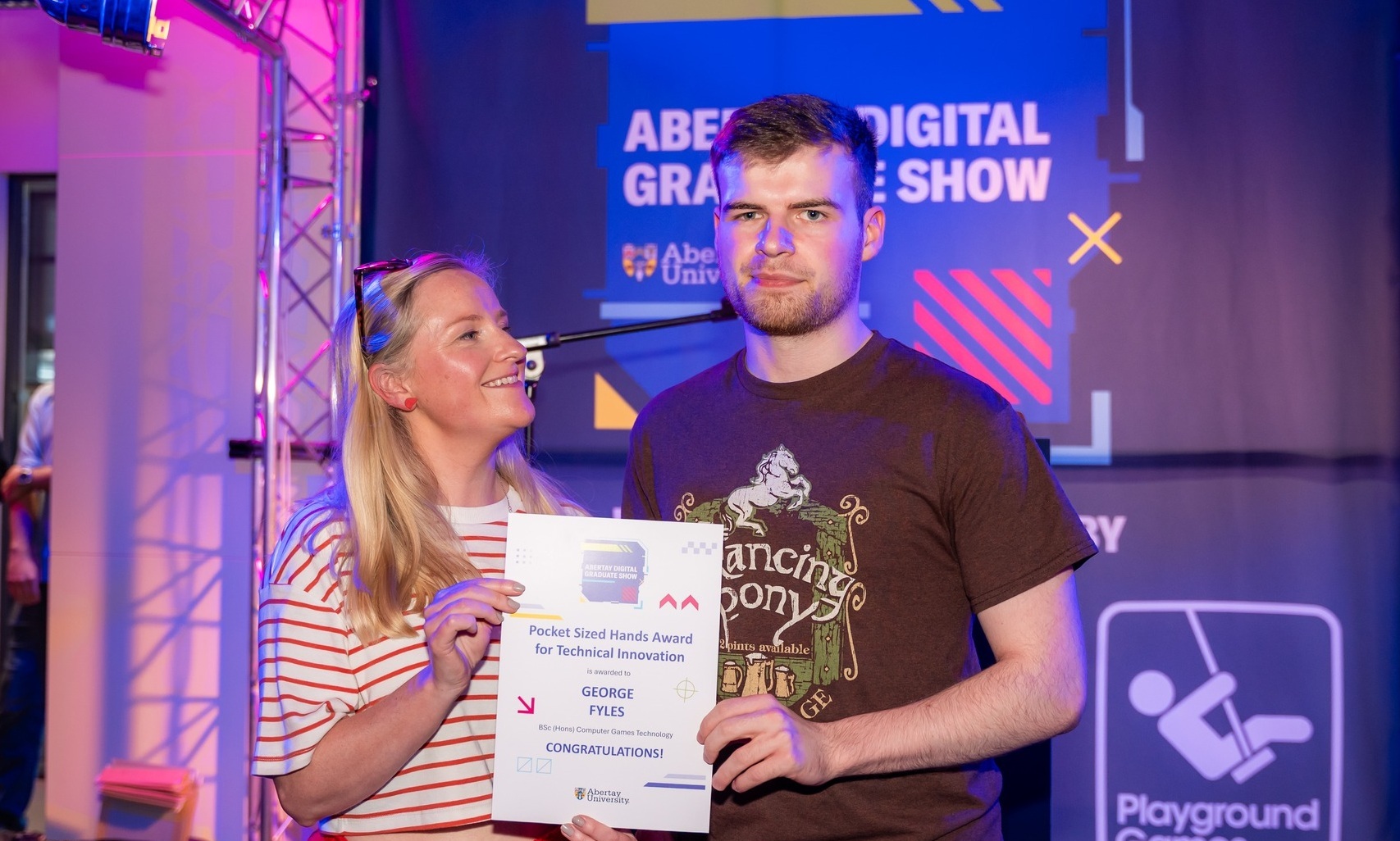
 Dissertation
Dissertation
 Original Proposal
Original Proposal



